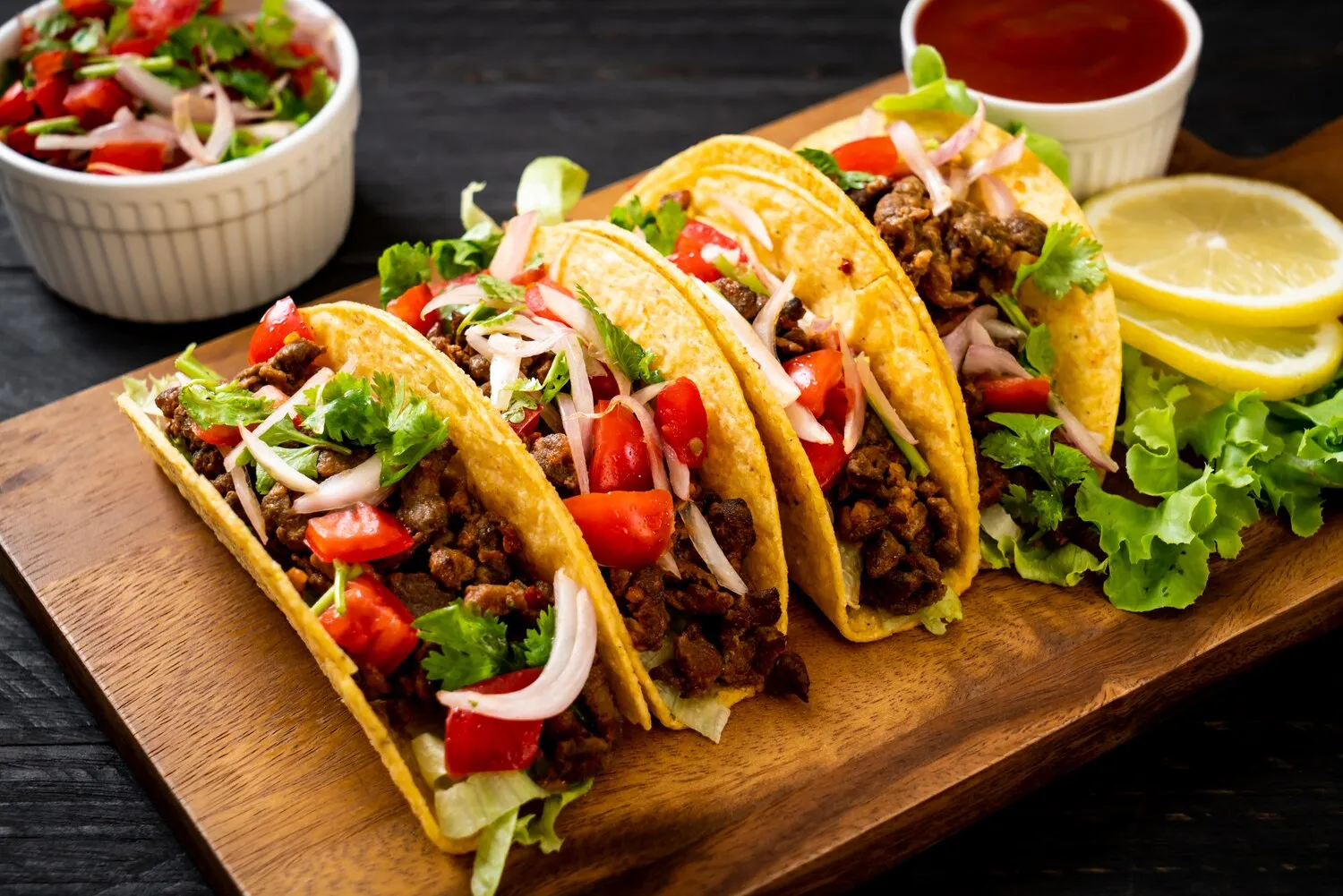
Tacos de Carnitas
Slow-cooked, shredded pork tacos.
Nutrition Facts
* The % Daily Value (DV) tells you how much a nutrient in a serving of food contributes to a daily diet. 2,000 calories a day is used for general nutrition advice.
Taqueria El Oso
Carnitas evolved from the Spanish technique of frying pork in its own fat. During the colonial period in Mexico, Spaniards introduced pigs, and the technique was adapted using local ingredients and flavors. It became a staple in central Mexico, particularly in the state of Michoacán.
Tacos de Carnitas are deeply rooted in Mexican culinary culture, often associated with celebrations, family gatherings, and street food traditions.
Fiestas and Celebrations
Carnitas are a common dish served at parties, family reunions, and special events like birthdays and baptisms. The preparation often involves a communal effort, with families coming together to cook and enjoy the meal.
Street Food Staple
Carnitas are a popular street food, found at markets, roadside stands, and specialized carnitas vendors. They are often served simply in tortillas with onions, cilantro, and salsa, providing a quick and satisfying meal.
Regional Variations
While originating from Michoacán, carnitas are enjoyed throughout Mexico, with regional variations in spices, cooking methods, and accompaniments. Each region might have its own unique take on the dish, reflecting local flavors and traditions.
Rich, savory, and deeply porky, carnitas offer a complex flavor profile that balances tender meat with crispy edges and a hint of sweetness.
The dominant flavor is pork, rendered intensely savory by slow cooking in lard. The long cooking time creates tender, juicy meat that pulls apart easily, contrasted by crispy, browned edges. Aromatics like orange, garlic, bay leaf, and sometimes cinnamon or cloves, subtly infuse the pork, adding depth and complexity. The seasoning with salt and pepper enhances the natural flavors of the pork. When served in tacos, toppings like cilantro, onion, salsa, and lime add brightness, acidity, and freshness to complement the richness of the pork.
Pork Selection
Use a cut of pork with a good amount of fat, such as pork shoulder (Boston butt) or pork belly. The fat is crucial for rendering and creating the characteristic tender and crispy texture.
Low and Slow Cooking
Maintain a low and consistent temperature throughout the cooking process. This allows the pork to render slowly and evenly, resulting in tender, juicy meat.
Crispy Edges
Towards the end of the cooking process, increase the heat slightly to allow the edges of the pork to crisp up and caramelize. This adds a delightful textural contrast.
Don't overcrowd the pot
make sure not to overcrowd the pot when cooking the pork, as this will lower the temperature of the lard and steam the pork instead of frying it.
Explore additional Tacos dishes and restaurants
Explore TacosDiscover top dining spots and culinary experiences in Berlin.
Explore BerlinLearn more about the food culture, restaurant scene, and culinary heritage of Germany.
Explore Germany